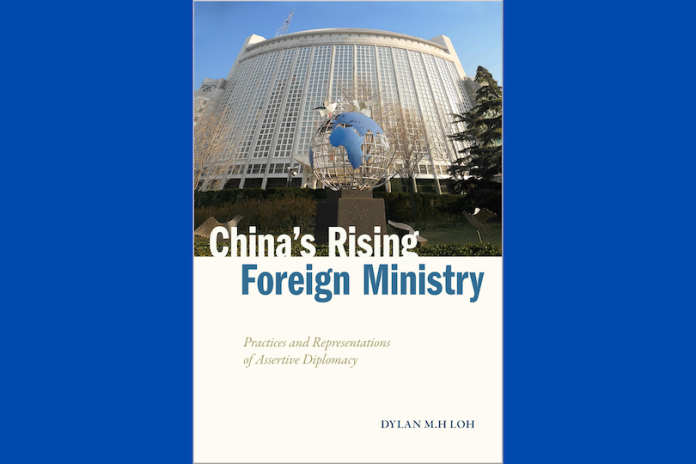China’s Rising Foreign Ministry: Practices and Representations of Assertive Diplomacy,By Dylan M. H. LohStanford University Press, 2024
The emergence of China as a global powerhouse has sparked discussions on whether its rise has been peaceful or aggressive. This assertiveness, as seen in its recent diplomatic approaches, has garnered significant attention. While the conventional narrative attributes China’s assertiveness to its military strength, top leadership, and nationalist sentiment, Dylan Loh’s book, “China’s Rising Foreign Ministry,” sheds light on the role of the Ministry of Foreign Affairs (MOFA) in shaping China’s assertive behavior. The book highlights the independent influence of MOFA and its relationship with political leadership, emphasizing MOFA’s role in China’s assertive stance on the global stage.
Wolf warrior diplomacy, characterized by an assertive and confrontational style adopted by Chinese diplomats, began to gain prominence around 2019, although Loh notes that this assertive diplomacy has been evident since 2009. The book delves into the period from 2009 to 2020, focusing on MOFA’s central role in driving China’s assertiveness and its representational role on the global stage. Through interviews, participant observation, textual analysis, and artifact studies, the author explores the inner workings of the Chinese government, employing practice theory to analyze China’s assertive diplomatic maneuvers.
The book is structured into five chapters, with the introduction laying out the significance of MOFA and diplomats. Subsequent chapters delve into existing literature, MOFA’s communication practices, the formal and informal rules of Chinese diplomacy, MOFA’s impact on foreign policy, and the influence of social media on China’s diplomatic discourse. By addressing gaps in current research on Chinese foreign policy and offering a practice-based account of MOFA’s role, the book contributes to a better understanding of China’s assertiveness and its implications for global politics.
Overall, Loh’s book makes several key arguments regarding China’s assertiveness. It highlights MOFA’s pivotal role in shaping China’s diplomatic stance, the role of social media in enhancing MOFA’s influence, and the functional capabilities of MOFA in advising, implementing, and coordinating foreign policy. The book also underscores how Chinese diplomats construct external perceptions of China’s assertiveness through their interactions and communication. By employing practice research, Loh offers valuable insights into the dynamics of China’s assertive diplomacy and sheds light on the internal workings of the Chinese government.
In conclusion, “China’s Rising Foreign Ministry” adds to the discourse on China’s assertive diplomacy and offers a nuanced perspective on the country’s rise as a global power. By emphasizing the role of MOFA in shaping China’s foreign policy, the book contributes to a more comprehensive understanding of China’s evolving role on the world stage. It is recommended for those interested in Chinese foreign policy, practice research, and qualitative investigations into international relations.




